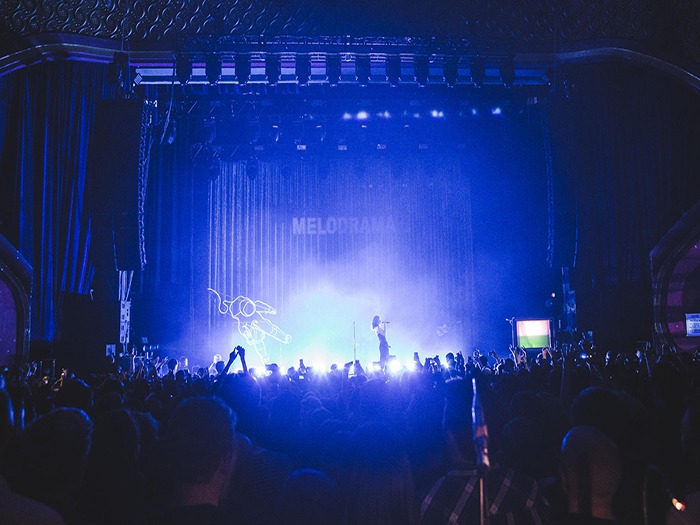New Zealand artist Lorde completed a world tour in support of her second studio album, Melodrama. UK-rental company Adlib Audio supplied an L‑Acoustics K2 system for the duration of the UK and European dates, its scalability and light weight making it ideal for the varying venue sizes, as well as their weight loading restrictions.
“We chose K2 because it has similar sonic qualities to L‑Acoustics K1, but in a smaller, lighter enclosure,” said Adlib system engineer Sam Proctor. “A lot of smaller venues have a strict weight allowance and K2 proved invaluable.”
Proctor noted that although there are similar sized systems that are the same approximate weight, they do not reproduce the low frequencies that K2 does. “K2 extends far past where other systems drop off,” he added. “And coupled with the KS28 subs, the system produces the low end response we wanted. Being able to quickly adjust the horizontal dispersion also helped us to avoid walls close to the system and helped minimise reflections.”
The tour’s biggest setup consisted of main hangs of 14 K2 per side, with 6 K2 per side for delays, along with 20 KS28 subs. This was supplemented where necessary with Kara side hangs. Kara were also used as lip fills on the centre subs and ARCSII provided infill. The system was driven by LA12X amplifiers over AES. “The sub configuration was a left, centre, right cluster,” Proctor continued. “As the size of the venues varied so greatly, we kept this setup for consistency and because steps into the pit from stage prevented spaced subs or different configurations being an option.”
Adlib also provided a full stage package, consisting of mics, line system, 2 ARCSII for side fills, and a single SB15p for the drum sub. “I would design and tune the system each day,” Proctor added. “For the majority of venues, there was limited flexibility on where the main arrays could be flown and we would use between 10 and 12 K2 a side.”
Proctor used L-Acoustics 3D acoustical modelling programme, Soundvision, to help him design the system to get the coverage he wanted in each venue. He then spent time modelling the frequency response throughout each room, tweaking the FIR filters to get the closest matched response throughout each venue.
“It was great to be involved with such a tight team for the tour,” Sam concluded. “Spending time modelling this detail in advance proved very accurate and I found myself only doing very minor changes when tuning the system. Because of this, Front of House engineer Philip J Harvey and I were able to deliver a consistent result to the audience every day, regardless of the venues’ various acoustic challenges.”

